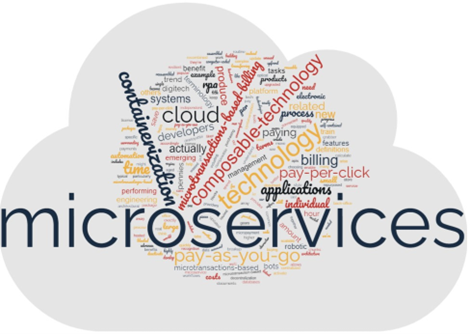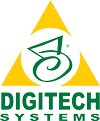
Typical of new technology, the terminology surrounding microservices and microtransactions-based billing is still a work in progress. Microtransactions-based billing refers to paying only for the amount of services actually used. With Digitech Systems robotic process automation (RPA), as an example, it is a microservice that costs only pennies per hour for the time the electronic bots are performing common back-office tasks.
To help you better understand these emerging trends in technology purchasing and development, we’ve put together a few definitions, related terms and other information. We’ll update this list as more terms emerge.
Get a free copy of our data sheet on microservices and microtransactions-based billing.
Definitions
Microservices: A style of software architecture in which developers build and test components of code that can be repurposed across an array of products.
Related terms: Containerization, composable technology, microservices architecture.

Benefit to end user: Instead of purchasing a large software package that includes many features that might go unused, you save by choosing only the specific individual cloud information management services you need. You save further by paying only for the amount those services are used. No more wasted time and money on bloated, aged software packages.
Benefit for developers: Allows developers to produce small pieces or chunks of code that can be repurposed, reused and recombined in any combination to produce new products. Developers can produce products more quickly with higher quality. Individual services can be updated and upgraded independent of one another.
Microtransactions-based billing: Users are billed only for the services they accessed and the amount they use each service during the billing period. Technology advances enable microservices providers to keep precise tabs on the specific technologies used and then calculate payments accordingly.
Related terms: Micropayment.

Real world example: Digitech Systems’ robotic process automation (RPA) costs only pennies per hour for the time electronic bots are actually performing routine office tasks such as transferring documents and data.
Container: A container is a bundle of application code and all the related configuration files, libraries, and dependencies required for the application to run.
Interoperability: The integration of technology, applications and/or IT systems to improve transparency, agility, scalability, productivity and customer experience.
Modular: The breakup of complex systems into small, reusable building blocks such as microservices and APIs that can be easily assembled and reassembled to create new applications.
Platform: A hosted service accessible through the cloud that provides all the hardware and software tools needed to run cloud software applications, including microservices.
Digitech Systems Sales and Marketing
RELATED LINKS
- Learn more by reading this overview on microservices and microtransactions-based billing from the perspective of consumers.
- Use microservices and microtransactions-based billing to automate common office tasks with our next generation robotic process automation (RPA).
- Read how you can stay ahead of the pack on technology from this Document Imaging Report article, Digitech Dishes on Microservices—A Trend That’s Picking Up Steam.”
- How will microservices and microtransactions-based billing shape the office of the tomorrow Read this Workflow article, “The Flexible Future Office.”
- Interested in selling microservice- and microtransactions-based technology? Visit our resellers blog.

Contact Info
+1 866.374.3569
Email Support
Email Sales
Daily: 8:00 am - 6:00 pm CST/CDT
Saturday & Sunday: Closed
Copyright © 2025 Digitech Systems, LLC - All Rights Reserved